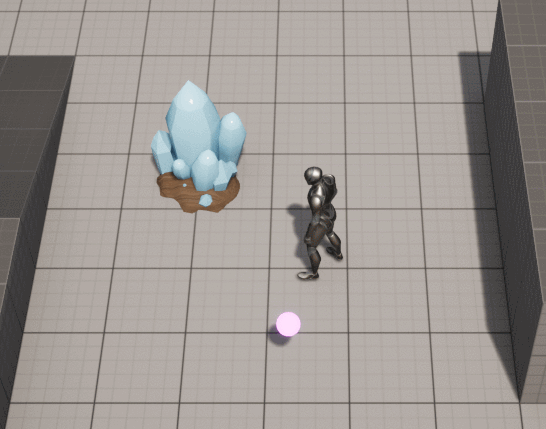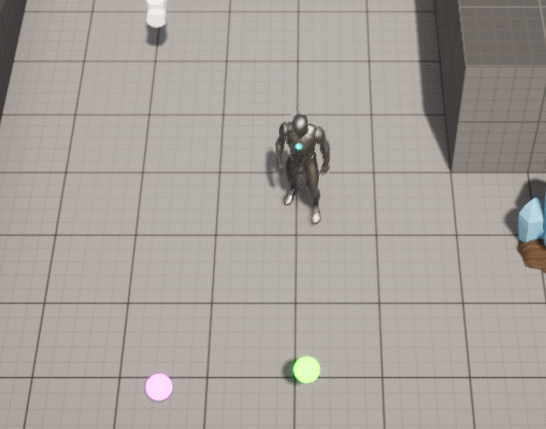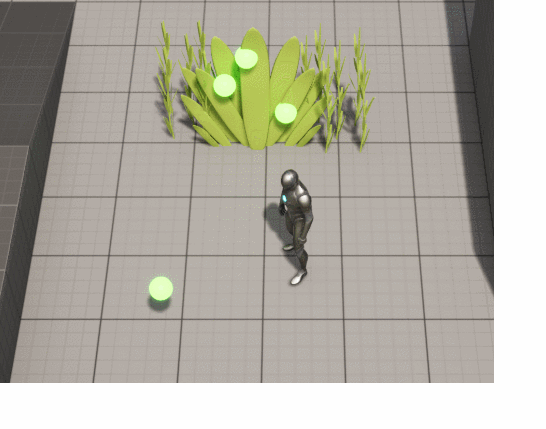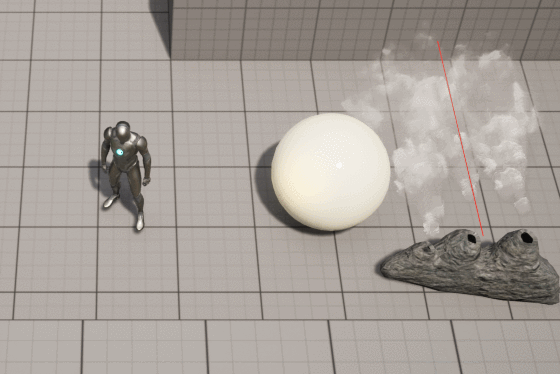Tear of the Sea
September 2022- November 2023
Single Player | Top-down | Adventure
14 Person Team - Role: Blueprinting & Level Design
Tear of the Sea is a single-player adventure game set in a deep ocean trench. The player controls a young fish-person who must travel into the dark ocean depths to deliver a light crystal to the Vaktar, guardian of the deep. Along the way are many hostile aquatic creatures and obstacles. Players must traverse the path by using the light crystal, that can throw projectiles to reveal the darkened path, and interact with gates and towers to solve puzzles.
Tear of the Sea is a group project designed for the Professional Production class at SCAD. The game was developed over a ten-week term, with two weeks of conception followed by eight weeks of production. During this time, we ideated a game concept, prototyped it, expanded it into a full game, ran regular playtests, and developed a finished product. The team consisted of fourteen people in the course, plus outside students such as the audio production team.
I worked as a game designer and blueprinter. My primary role was to concept interactive assets such as obstacles, pickups, and enemies. I was also responsible for blueprinting the actors in Unreal and general debugging. Later in the process, I worked as part of the level design team.
Spectrum of Interactions


The key interactive mechanic is the ability to throw an orb of light. I did my best to make sure there were multiple uses for this simple mechanic. The most basic action is to use the light to reveal dangers on the path ahead, such as urchins or pits. The light orb can also be thrown at certain enemies to stun them, or thrown at colored gates to make them open. The player must be strategic with the light, however, as some begin chasing the player when illuminated.
Development Process
.png)
.png)
Tear of the Sea was a synthesis of multiple game ideas from team members. The main focus was that the player controls a character that travels through a deep undersea landscape. The character must continually throw orbs of light in order to illuminate the path ahead and interact with objects.
Starting from this basic premise, I began to ideate as many different objects as possible, and how they would respond to the player and their light. I focused on making quick sketches and diagrammed the sequence of interactions for each object. These sketches and the key appear to the right.


Interactive Object Ideation
I developed twenty-five different object ideas, presented them to the team, received feedback and pared down the number of objects. We were a student team with limited time to work and needed to keep the objects as simple as possible. I combined or cut repetitive ideas and made each light-crystal interaction unique. Team members also cast votes on which elements they preferred. I condensed down to five potential animated assets and created these sheets to diagram their behavior and necessary animations.

.jpg)
.jpg)
.jpg)
.jpg)
Prototyping
After deciding on the interactive objects, I passed the details to the art team. Our concept artist, Katie DeJarlais, began sketching designs for each enemy.
I began work on prototyping. Noah Heilveil was the other primary programmer working on the project and was responsible for designing the underlying blueprints related to the character, projectile, and fog system. I took the base system they were setting up, and then began to construct the interactive objects I had designed.
This blueprinting process took two weeks, during which I implemented almost every interactive object. I tested the system repeatedly and reviewed my work to make sure it was intuitive to the level design team artists. I started with rough shapes for the assets and added the simple models seen here as placeholders. The models were produced by various individuals on the design team.





During this time, progress occurred fairly well. We utilized Perforce as a version control software and made sure to coordinate efforts and pass problems back and forth. Production on the programming side went smoothly as we finished the fifth week.
Level Design
As the project continued, I moved from primarily blueprinting additional assets to troubleshooting programming issues. During this time, our level design team consisting of me, the overall project manager, and the UI designer began our work. We had weekly meetings to work out how the game levels change and progress, and which game elements to assign to each level. These documents were created by Bee Nix and used with permission. After developing the general plan, we began laying out the actual game map. I advised on the utility of my assets and how best to guide people through the level.

.jpg)
.jpg)

.jpg)
After developing the general plan, we began laying out the actual game map. I advised on the utility of my assets and how best to guide people through the level.
By week six, the first version of the first level was ready and we began playtesting the prototype. Our marketing person did an amazing job at regularly running playtests. The feedback provided a ton of useful insight and we revised our work to better telegraph interactions and direct the player. We realized how as designers it is easy to forget how elements we know by heart can be confusing to newcomers. We did our best to incorporate feedback and improve assets and layouts to better direct gameplay.
The images to the left represent the game maps in development. Images were created by Bee Nix and used with permission.
Reflection
Overall, this project was an excellent opportunity to work on a game project as a large team. In terms of blueprinting, the task was well within my abilities, but I need to continue to improve my documentation and presentation skills. The prototyping sketches are a good start for a game project, but later documents need more polishing and presentation. I learned to make sure my blueprint actors are intuitive for artists to use and to have good documentation and tooltips. On the level design side of things, I was reminded to make sure that encounters start with the simplest scenarios and build upon one another. The team did an excellent job of running playtests, and that helped with improving the game experience.
In terms of the production process, we started strong but ran into difficulties in the middle. The programming team did well, but there was a delay with producing many of the art assets. Additionally, Perforce breaking one weekend compounded problems. We completed the project on time due to the dedication of many team members. In particular, our project manager Bee did an excellent job of keeping production aligned with our schedule.







